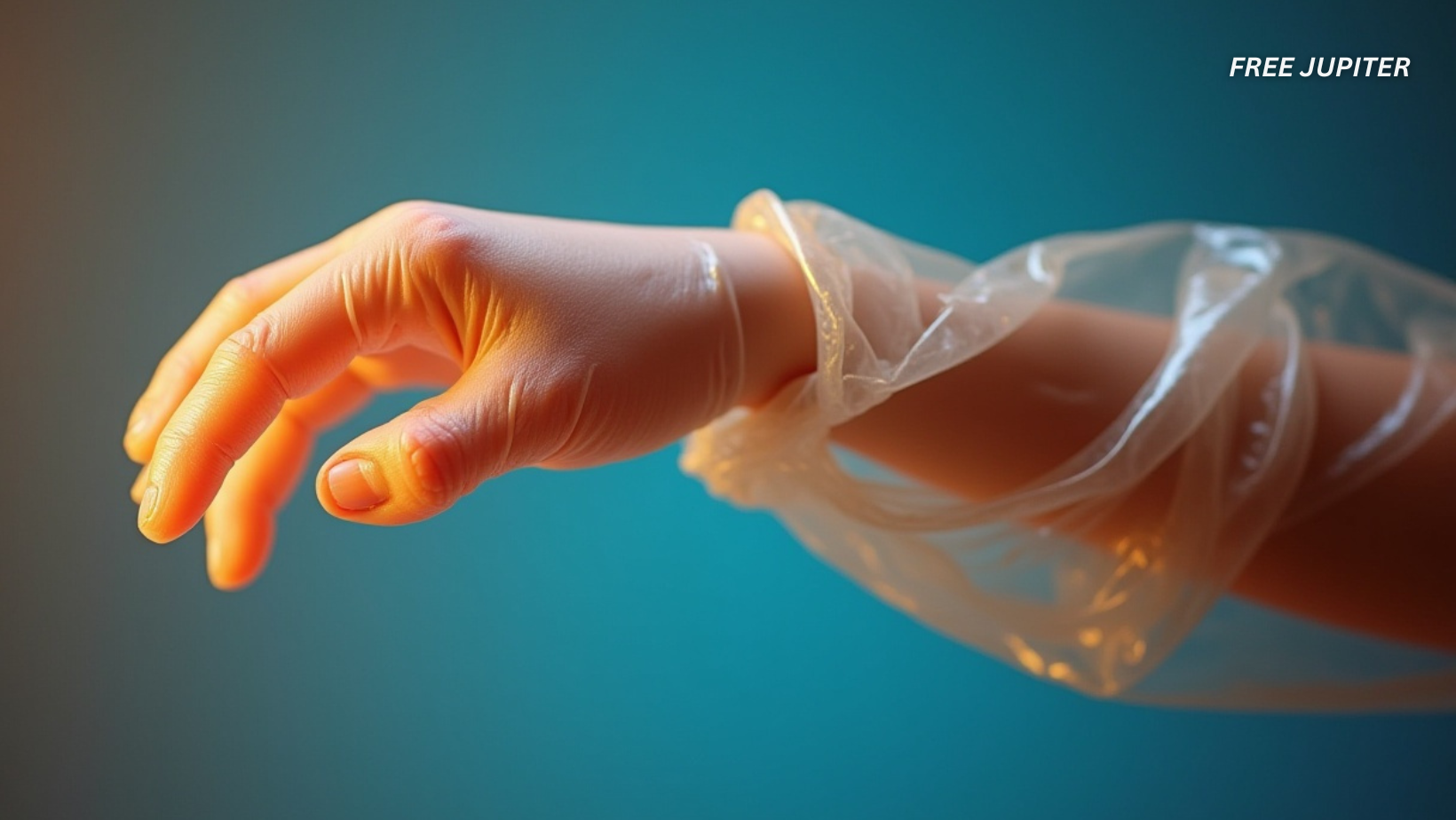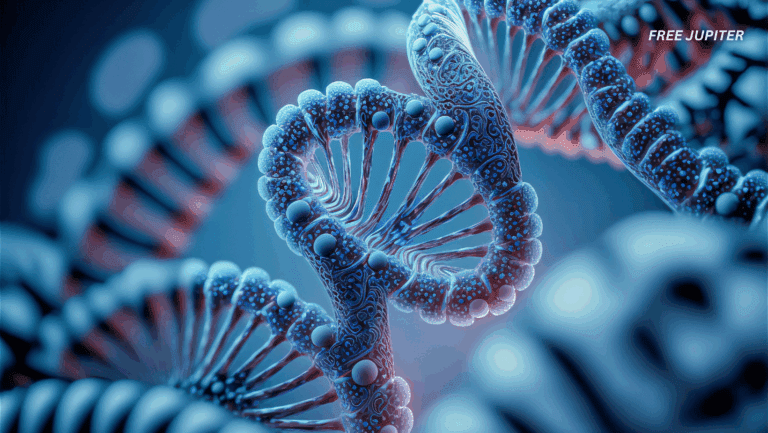Scientists have taken a big leap forward in wound care by developing a special gel that acts a lot like human skin — flexible, strong, and able to heal itself quickly.
This new hydrogel, created by researchers from Aalto University and the University of Bayreuth, can repair up to 90% of damage within just four hours and fully heal within 24 hours.
It’s made by mixing ultra-thin clay nanosheets with a dense network of tiny polymer threads, which together create a structure that’s both tough and self-repairing.
What Makes This Hydrogel So Effective?
Hydrogels are materials rich in water and made from polymers, which are long, chain-like molecules. Because of their softness and flexibility, hydrogels are great for mimicking biological tissues like skin.
But what sets this new gel apart is the addition of those ultra-thin clay nanosheets. These nanosheets act like reinforcing layers, making the gel stronger without losing its flexibility. The polymers in the gel intertwine like tiny wool threads, allowing the material to quickly reconnect and heal itself when damaged.
How Does It Work in Healing?
When applied to a wound, hydrogels offer a moist environment that’s crucial for healing. This moist setting helps cells and enzymes do their job better, speeding up skin cell growth and repair.
The gel also absorbs fluids from the wound, which keeps the area clean and reduces inflammation. Moreover, hydrogels can protect wounds from bacteria and other harmful agents, while still being easy to remove without causing pain or damage to new tissue.
The unique structure of this hydrogel allows it to rapidly “zip” itself back together after cuts or tears. This self-healing ability comes from the mobility of the polymer chains at a molecular level, which can move and reconnect quickly.
This means wounds covered with this gel can start closing and healing much faster than usual.
Beyond Just Healing Wounds
This hydrogel isn’t just about faster healing. Its properties make it a promising tool for:
- Wound dressings that adapt to different wound shapes and sizes, maintaining moisture and protecting against infection.
- Regenerative medicine, where it can support tissue growth and skin regeneration by mimicking the natural environment of skin cells.
- Drug delivery, as hydrogels can be engineered to slowly release medicines directly to the wound site, improving treatment effectiveness.
- Soft robotics and prosthetics, where materials that can repair themselves could greatly improve durability and performance.
Reazd more: Chewing Gum Sets Off Microplastic Bombs In Your Mouth, Study Reveals
How Was This Gel Made?
The process involves mixing a monomer powder with water that contains the nanosheets. This mixture is then exposed to ultraviolet (UV) light, which helps the molecules bond together to form the gel — similar to how gel nail polish hardens under UV lamps.
The result is a flexible, skin-like material with a tightly knit polymer network that can heal itself quickly when damaged.
What’s Next?
While still in experimental stages, this hydrogel holds great promise for transforming how wounds are treated, especially for burns, surgical wounds, and chronic skin injuries.
By speeding up healing and reducing scarring, it could improve recovery times and patient comfort. Scientists continue to explore ways to enhance these gels further, including adding antibacterial properties, improving their ability to support new tissue growth, and making them easier to produce on a large scale.
In summary, this skin-like hydrogel combines the best of nature and technology — flexibility, strength, and rapid healing — offering a glimpse into a future where wounds heal faster and better, with less pain and fewer complications.
Related Study: Hyaluronic Acid Hydrogels with Enhanced Self-Healing and Mechanical Strength
What Are Hyaluronic Acid Hydrogels?
Hyaluronic acid (HA) is a natural molecule found abundantly in human skin and connective tissues.
It plays a crucial role in keeping skin hydrated and flexible. Scientists have been developing hydrogels based on HA because they are biocompatible and support tissue repair, making them excellent candidates for wound healing and regenerative medicine.
How Do These Hydrogels Heal Themselves?
Recent research shows that HA hydrogels can be engineered to heal quickly through special chemical bonds known as acylhydrazone linkages. These bonds are reversible, meaning they can break and reform dynamically.
This allows the hydrogel to recover its structure rapidly after damage, similar to how human skin repairs itself. Studies report that such hydrogels can self-heal completely within an hour, thanks to multiple dynamic interactions including hydrazone bonds, disulfide bonds, and electrostatic forces.
Read more: The Kinds Of Proteins You Should Eat Every Week, According to a Dietitian
Mechanical Strength and Healing Efficiency
One challenge with hydrogels is balancing softness with mechanical strength. The new HA hydrogels achieve this by combining dual crosslinking strategies: reversible chemical bonds and photocrosslinking.
This creates a network strong enough to mimic the mechanical properties of human skin (around 2.2 kPa stiffness), yet flexible enough to allow rapid self-repair. The self-healing efficiency can reach approximately 90% within 6 hours, making these hydrogels highly effective for wound care.
Benefits for Wound Healing
These hydrogels provide a moist, stable environment essential for healing. They help reduce inflammation, promote new blood vessel growth (angiogenesis), and support collagen deposition and tissue remodeling, which are all critical phases in wound repair.
Additionally, some formulations include antibacterial components that protect wounds from infection, further enhancing healing outcomes.
Beyond Wound Care: Other Biomedical Applications
Self-healing HA hydrogels also show promise in other areas:
- Drug delivery: Their dynamic networks can control the release of medicines directly to injured tissue.
- Tissue engineering: They provide a scaffold that supports cell growth and tissue regeneration.
- Joint health: Modified HA with self-healing properties improves lubrication and longevity in joints, potentially slowing cartilage degeneration after injuries like anterior cruciate ligament (ACL) tears.
How Are These Hydrogels Made?
Typically, scientists modify HA chemically to introduce reactive groups that form reversible bonds. Mixing these modified HA molecules under mild conditions followed by light-triggered crosslinking creates the gel. This process is relatively fast (gelation in under a minute) and can be tuned for specific medical applications.
Read more: This 41-Year-Old Doctor Says He’s Biologically Only 24—Thanks to Just 3 Supplements Daily
Future Directions
Research continues to optimize these hydrogels by enhancing their antibacterial activity, mechanical properties, and biocompatibility. The goal is to create versatile, self-healing materials that can be used not only for skin wounds but also in implants, prosthetics, and soft robotics.
The combination of rapid healing, strength, and biological friendliness makes HA hydrogels a leading candidate for next-generation medical materials.










